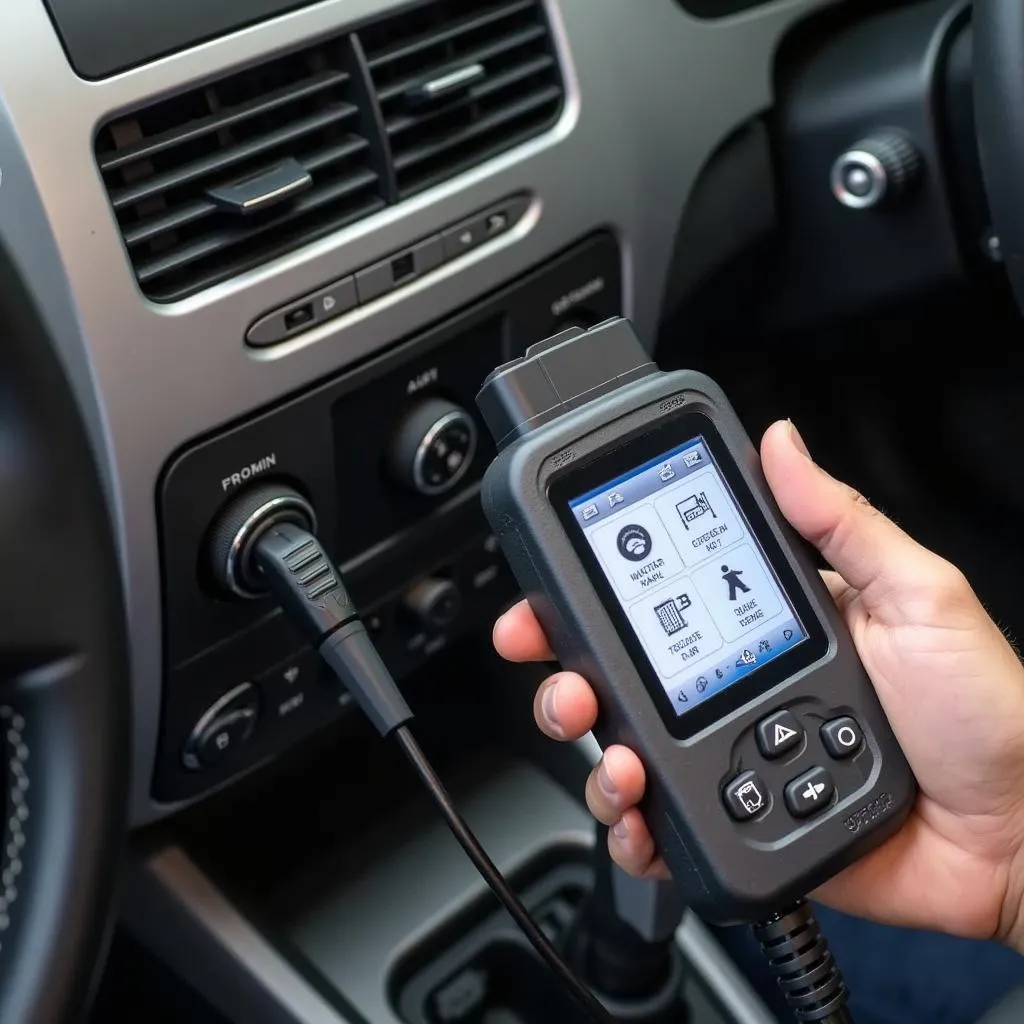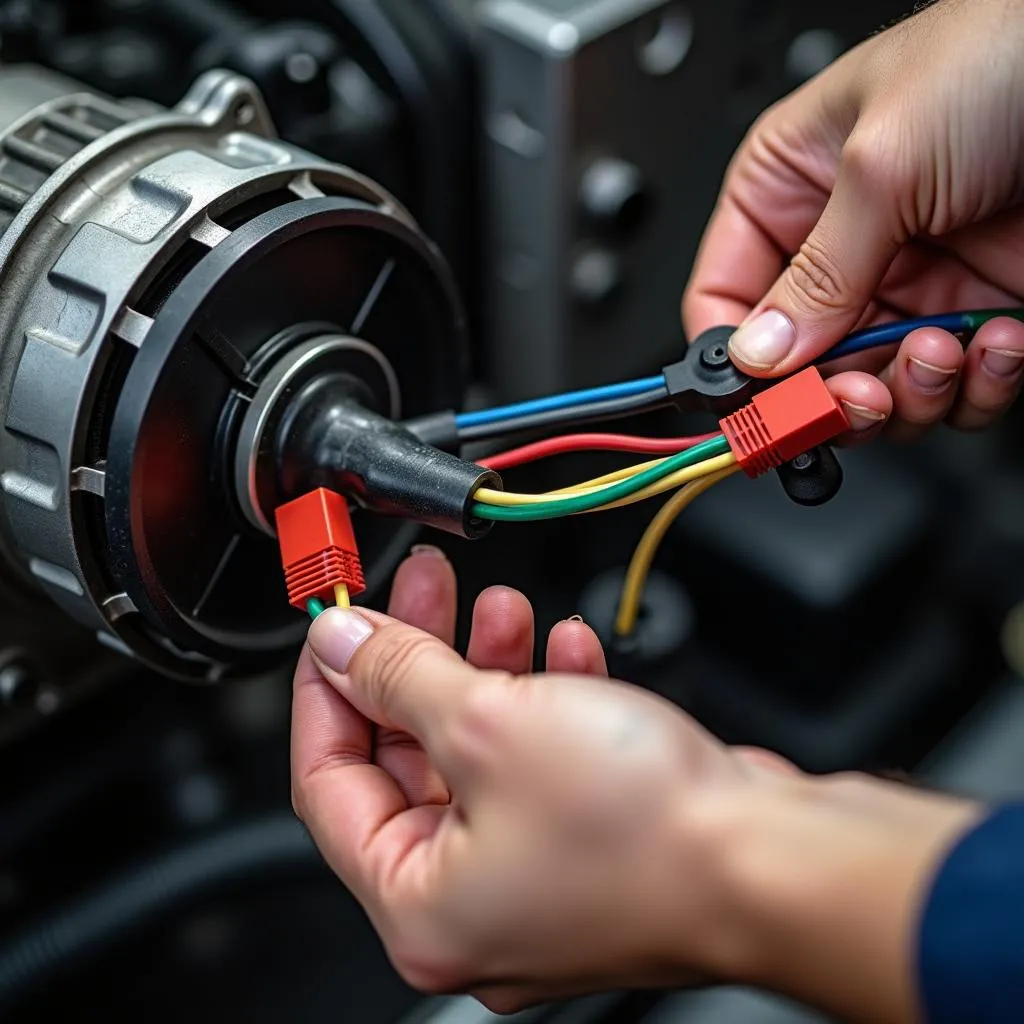Swapping a manual transmission (MT) for an automatic in your car is a big job, and one of the less obvious but critical aspects is the wiring harness. While it might seem straightforward to just swap out the parts, the wiring for a manual and automatic transmission can be surprisingly different. This guide will dive into the intricacies of converting from a radio manual MT wiring harness to an automatic car wiring harness, highlighting potential issues and offering solutions.
Understanding the Differences: MT vs. AT Wiring Harnesses
The fundamental difference lies in how each transmission interacts with the engine and other vehicle systems. Manual transmissions rely on the driver to shift gears, meaning less electronic intervention. In contrast, automatic transmissions are heavily reliant on sensors, actuators, and a complex network of wiring to manage gear changes, torque converter lockup, and communication with the engine control unit (ECU).
Common Challenges When Converting to an Automatic Wiring Harness
- Missing Wires and Connectors: Automatic transmissions require connections for components like the shift solenoids, range sensor, and brake pedal position sensor, which are absent in manual setups.
- Incompatible ECU Programming: The ECU in a car originally equipped with a manual transmission won’t have the necessary software to control an automatic.
- Wiring Routing and Integration: The existing wiring harness might not have the correct routing or length to accommodate the automatic transmission components.
Diagnosing Wiring Harness Issues
- Visual Inspection: Begin by comparing the old MT harness to the new AT harness. Look for missing wires, different connector types, or variations in wire colors.
- Consult Wiring Diagrams: Service manuals for your specific vehicle year, make, and model are crucial. These diagrams detail the exact wiring routes, connector pinouts, and wire functions.
- Diagnostic Tools: Advanced diagnostic tools like those offered by Cardiagtech can help pinpoint communication errors, faulty sensors, or ECU issues related to the new transmission.
 Car Diagnostic Tool for Transmission Wiring Issues
Car Diagnostic Tool for Transmission Wiring Issues
Steps for a Successful Conversion
- Source the Correct Harness: Obtain a complete wiring harness specifically designed for your vehicle’s year, make, model, and the automatic transmission you are installing.
- ECU Reprogramming or Replacement: In most cases, you’ll need to either reprogram your existing ECU or replace it with one compatible with an automatic transmission.
- Meticulous Installation: Carefully follow the wiring diagrams during installation. Ensure all grounds are properly connected and wires are routed to avoid heat sources or pinch points.
Expert Insights
“A common oversight is assuming all automatic transmission harnesses for a specific car model are the same. Variations exist between trim levels and optional equipment. Always double-check compatibility.” – David Miller, Automotive Electrical Engineer
FAQs About MT to AT Harness Conversions
Q: Can I modify my existing MT harness to work with an automatic?
A: While it’s tempting, modifying the original harness is not recommended. It’s a complex and error-prone process that could lead to malfunctions or safety hazards.
Q: What’s the benefit of using a professional diagnostic tool?
A: Tools like those offered by Cardiagtech streamline the troubleshooting process, saving time and reducing the chance of misdiagnoses. They can read and clear fault codes, display live data from sensors, and even assist with ECU programming.
 Installing an Automatic Transmission Wiring Harness
Installing an Automatic Transmission Wiring Harness
Conclusion
Converting from a manual to an automatic transmission involves more than just swapping out mechanical parts. The wiring harness is a critical component that ensures the seamless operation of your vehicle. While challenging, this conversion is achievable with careful planning, the right parts, and a solid understanding of automotive electrical systems. If you’re unsure about any aspect of the conversion, consult a qualified mechanic or reach out to CARDIAGTECH for expert guidance and support. You can contact us at +1 (641) 206-8880, email us at CARDIAGTECH[email protected] or visit our office at 276 Reock St, City of Orange, NJ 07050, United States.

